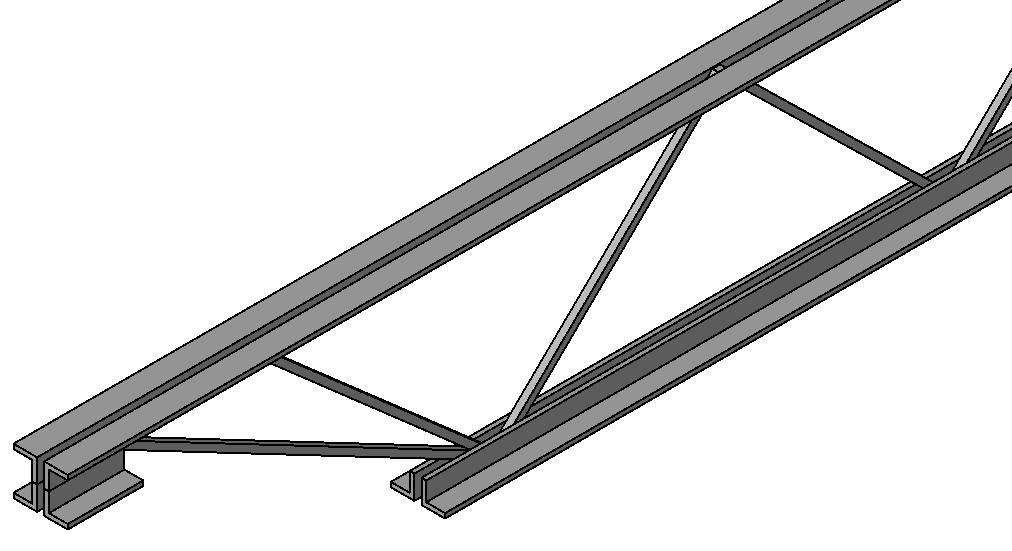Redbird
ENGINEERING
314-965-3136 phone
314-965-0824 fax
Steel Bar Joist & Girders
K-Series Joist
Open Web Steel Joists, K-Series, were primarily developed to provide structural support for
floors and roofs of buildings. They possess the following advantages and features which have
resulted in their wide use and acceptance throughout the United States and other countries.
First and foremost, they are economical. For many types of buildings, no other products or
methods for supporting floors and roofs can compete with steel joists. The advantages listed in
the following paragraphs all contribute to the overall economy of using Open Web Steel Joists.
K-Series are light in weight – they possess an exceptionally high strength-to-weight ratio in
comparison with other building materials. Coupled with their low price per pound, they contribute
significantly to lower building costs. An additional economy stemming from their light weight is
the fact that the structural materials supporting the joists, such as beams and Joist Girders,
columns, and the foundations themselves, can therefore be lighter, thus leading to even greater
economies.
Open Web Steel Joists represent unitized construction. Upon arrival at the job site, the joists are
ready immediately for proper installation. No forming, pouring, curing, or stripping is required.
Furthermore, their light weight makes the erection procedure simple and fast.
K-Series Joists are standardized regarding depths, spans, and load-carrying capacities. There
are 63 separate designations in the Load Tables, representing joist depths from 10 inches (254
mm) through 30 inches (762 mm) in 2 inch (51 mm) increments and spans through 60 feet
(18,288 mm). Standard K-Series Joists have a 2 1/2 inch (64 mm) end bearing depth so that,
regardless of the overall joist depths, the tops of the joists lie in the same plane. Seat depths
deeper than 2 ½” (64 mm) can also be specified.
K-Series Data Sheets
downloads:
LH-Series and DLH-Series Joist
Longspan and Deep Longspan Steel Joists are relatively light weight shop-manufactured steel
trusses. Longspan Steel Joists are used in the direct support of floor or roof slabs or decks
between walls, beams, and main structural members. Deep Longspan Steel Joists are used for the
direct support of roof slabs or decks between walls, beams, and main structural members.
The LH- and DLH-Series have been designed for the purpose of extending the use of joists to spans
and loads in excess of those covered by Open Web Steel Joists, K-Series.
Longspan Series Joists have been standardized in depths from 18 inches (457 mm) through 48 inches
(1219 mm), for spans through 96 feet (29,260 mm).
Deep Longspan Series Joists have been standardized in depths from 52 inches (1321 mm)
through 120 inches (3048 mm), for spans up through 240 feet (73,152 mm).
Longspan and Deep Longspan Steel Joists can be furnished with either under-slung or square ends,
with parallel chords or with single or double pitched top chords to provide sufficient slope for
roof drainage. Square end joists are primarily intended for bottom chord bearing.
Sloped parallel-chord joists shall use span as defined by the length along the slope. The joist
designation is determined by its nominal depth at the center of the span and by the chord size
designation.
The depth of the bearing seat at the ends of underslung LH- and DLH-Series Longspan Joists has been
established at 5 inches (127 mm) for chord section number 2 through 17. A bearing seat depth of 7
1/2 inches (191 mm) has been established for the DLH Series chord section number 18 through 25.
All Longspan and Deep Longspan Steel Joists are manufactured with standardized camber as given in
Table 103.6-1. For the proper handling of concentrated and/or varying loads, see
Section 2.3 in the Code of Standard Practice for Steel Joists and Joist Girders.
LH-Series & DLH-Series Data Sheets
downloads:
Joist Girders
Joist Girders are open web steel trusses used as primary framing members. They are designed
as simple spans supporting equally spaced concentrated loads for a floor or roof system. These
concentrated loads are considered to act at the panel points of the Joist Girders. Joist Girders
have been designed to allow for a growing need for longer span primary members, coupled with a need
for more efficient steel usage.
These members have been standardized in the LRFD and ASD Weight Tables for depths from
20 inches (508 mm) to 120 inches (3048 mm), and spans to 120 feet (36,576 mm).
Standardized camber is as shown in Table 1003.6-1 of the Specifications. Joist Girders are
furnished with underslung ends and bottom chord extensions. The standard depth at the
bearing ends has been established at 7 1/2 inches (191 mm) for all Joist Girders. Joist Girders are
usually attached to the columns by bolting with two 3/4 inch diameter (19 mm) A325 bolts. A loose
connection of the bottom chord to the column or other support is recommended during erection in
order to stabilize the bottom chord laterally and to help brace the Joist Girder against possible
overturning. A vertical stabilizer plate shall be provided on each column for the bottom chord of
the Joist Girder. The stabilizer plate shall be furnished by other than the joist
manufacturer.
Girder Data Sheets
downloads:




